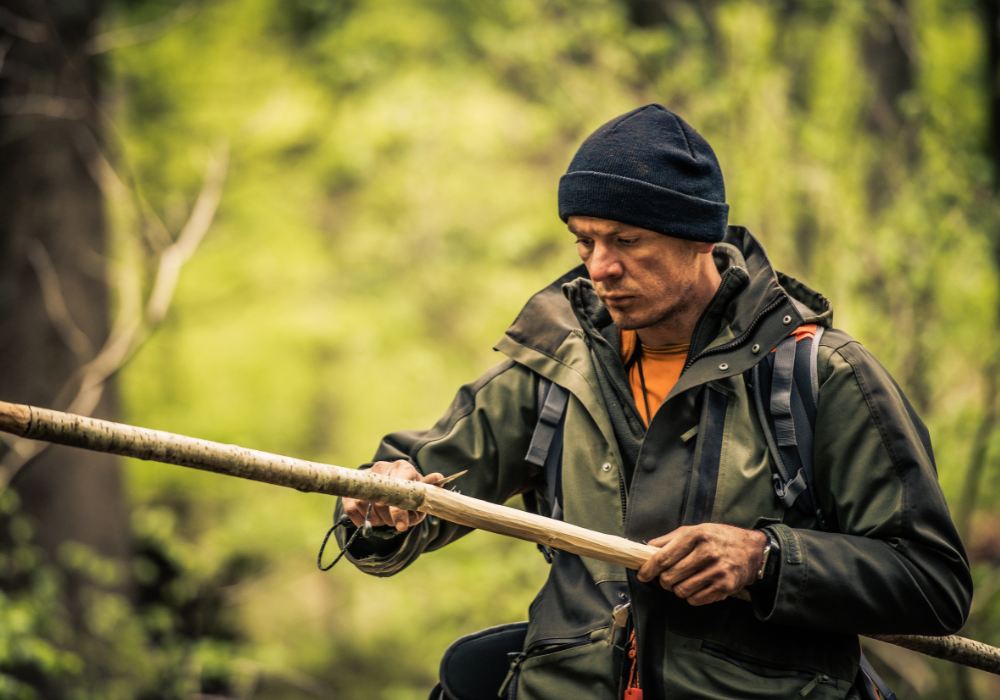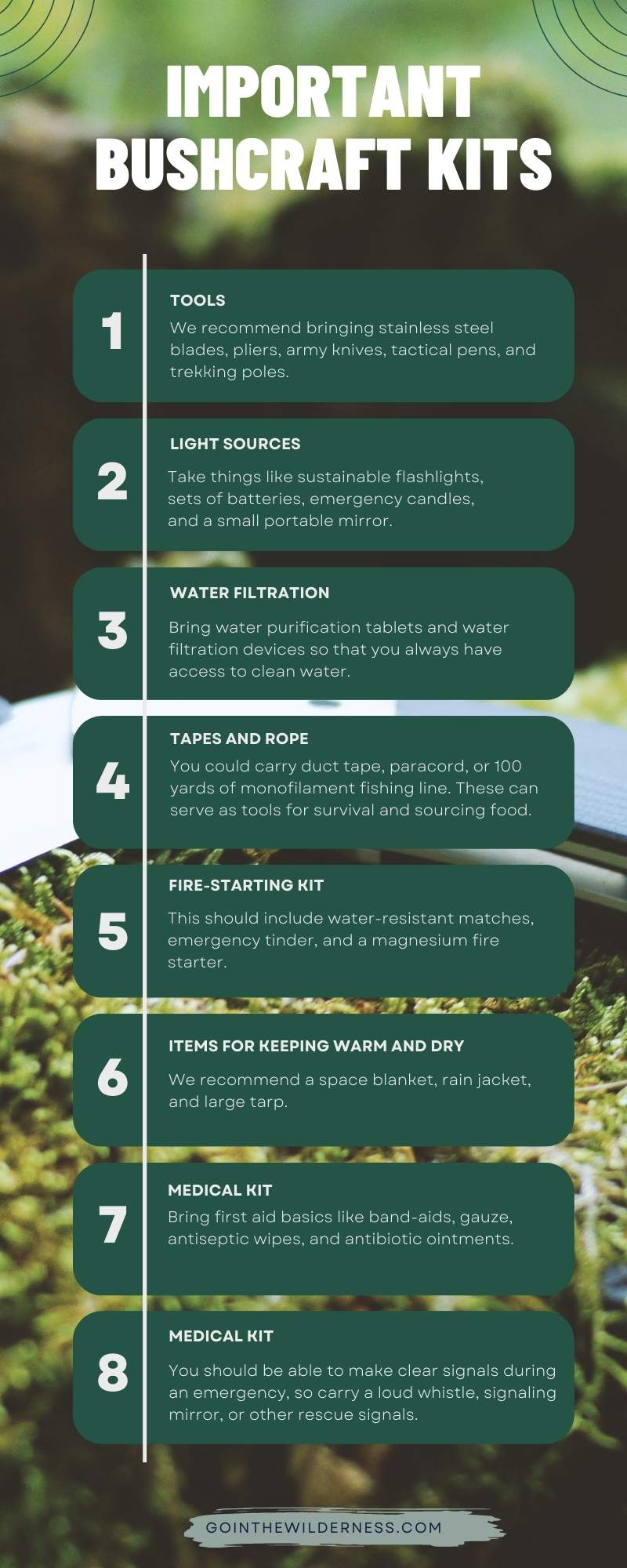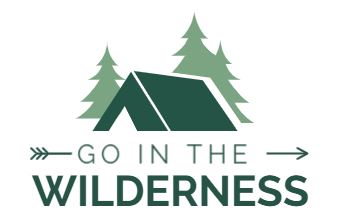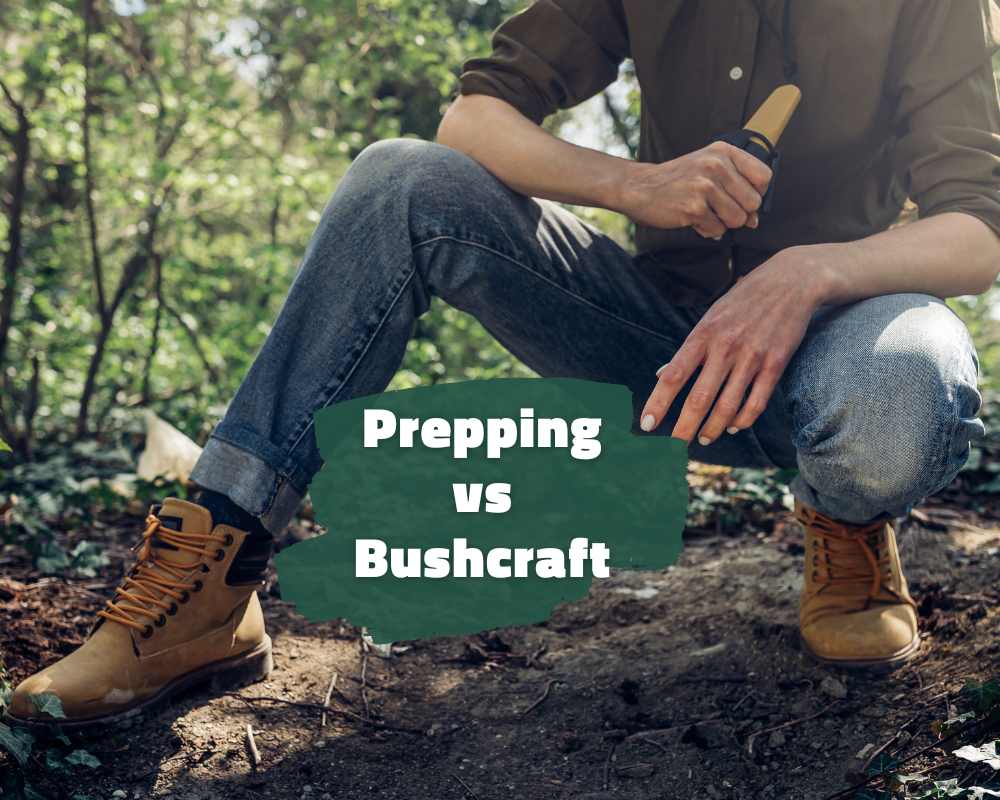You may have heard of preppers; they like to prepare themselves for future disasters by honing new skills and stockpiling kit. This differs from bushcrafting, which is more about practicing skills (like fire-building) out in the wilderness for fun.
In this article, you’ll get to know more about the differences between prepping and bushcraft, as well as the differences between preppers and survivalists. We’ll close the article by recommending some key pieces of kit that all three of these groups should have. Let’s go!
Difference Between Prepping and Bushcraft
Prepping involves practicing ways to stay alive and persevere in an extreme situation—for instance, a natural disaster or animal attack. Prepping equips you with the skills to survive independently, before help arrives. For instance, you might learn how to stock up on food or defend yourself against wild animals. By honing these skills, preppers aim to be both physically and mentally prepared for disasters.
Bushcraft, meanwhile, involves learning and practicing skills in the wild for fun—be it making fires in the bush, foraging for food, finding water, or building shelters using natural materials. Bushcrafters often do this out of a love for nature and acquiring new wilderness skills. As opposed to preppers, they aren’t imminently preparing themselves to deal with life-threatening events.
Interestingly, bushcrafting is similar to what our human ancestors used to do as hunter-gatherers. For many bushcrafters, the practice is a way to connect with our human instincts and roots. Preppers, meanwhile, are generally less motivated by ancestral instincts and more oriented to the future: how can they be best prepared to tackle adverse, unexpected situations?
Are Preppers the Same As Survivalists?

There are similarities between preppers and survivalists, but they aren’t quite the same. First of all, preppers are focused on honing skills in case of future disasters—and they often practice these skills in their home or local nature reserves. Survivalists, meanwhile, actually live out in nature for prolonged periods of time; survival is their lifestyle. They don’t prepare for disasters as such; they just utilize their existing skills as and when problems arise.
Another difference is that survivalists tend to act alone, while preppers often form part of a wider community. It is common for preppers to share ideas, skills, and plans with fellow preppers and friends and family, so that their close ones are also prepared for disaster. Survivalists, meanwhile, often act and live alone in the wilderness away from communities of people (or they may live in a small cohort of fellow survivalists in the wild).
Some people do both prepping and survivalism; the two practices inevitably overlap. Both groups are excellent at handling emergencies. Undoubtedly, honing skills out in nature also means that preppers and survivalists have things in common with bushcrafters, too. So in the next section, let’s take a look at some key items of kit that all three groups should bring into the wild.
What Are the Most Important Bushcraft Kits to Have?
Whether you’re a bushcrafter, prepper, or survivalist, there are some essential kit items you should bring into the wild. These are:
- Tools: We recommend bringing stainless steel blades, pliers, army knives, tactical pens, and trekking poles.
- Light sources: Take things like sustainable flashlights, sets of batteries, emergency candles, and a small portable mirror.
- Water filtration: Bring water purification tablets and water filtration devices so that you always have access to clean water.
- Tapes and rope: You could carry duct tape, paracord, or 100 yards of monofilament fishing line. These can serve as tools for survival and sourcing food.
- Fire-starting kit: This should include water-resistant matches, emergency tinder, and a magnesium fire starter.
- Items for keeping warm and dry: We recommend a space blanket, rain jacket, and large tarp.
- Medical kit: This is absolutely essential. Bring first aid basics like band-aids, gauze, antiseptic wipes, and antibiotic ointments. Another recommended item is medication for stomach issues as they can be very debilitating in the wild.
- Rescue signals: You should be able to make clear signals during an emergency, so carry a loud whistle, signaling mirror, or other rescue signals.

And that’s a wrap! You now know the key similarities and differences between preppers and survivalists—and where these overlap with bushcrafting as a whole. You’ve also seen the key items of kit that all three groups need. Make sure to add any missing items to your list!
I am Bruno. Navigating the urban rush by day, I find peace under the stars by night. Alongside my loyal companion and co-adventurer Lilith, we explore the balance between city life and nature’s embrace. Through writing and films, I delve into bushcraft and the wild’s allure.
GointheWilderness is my bridge between these two realms, guiding you to reconnect with your innate wilderness.
Eden is here and now; join us in rediscovering it.

